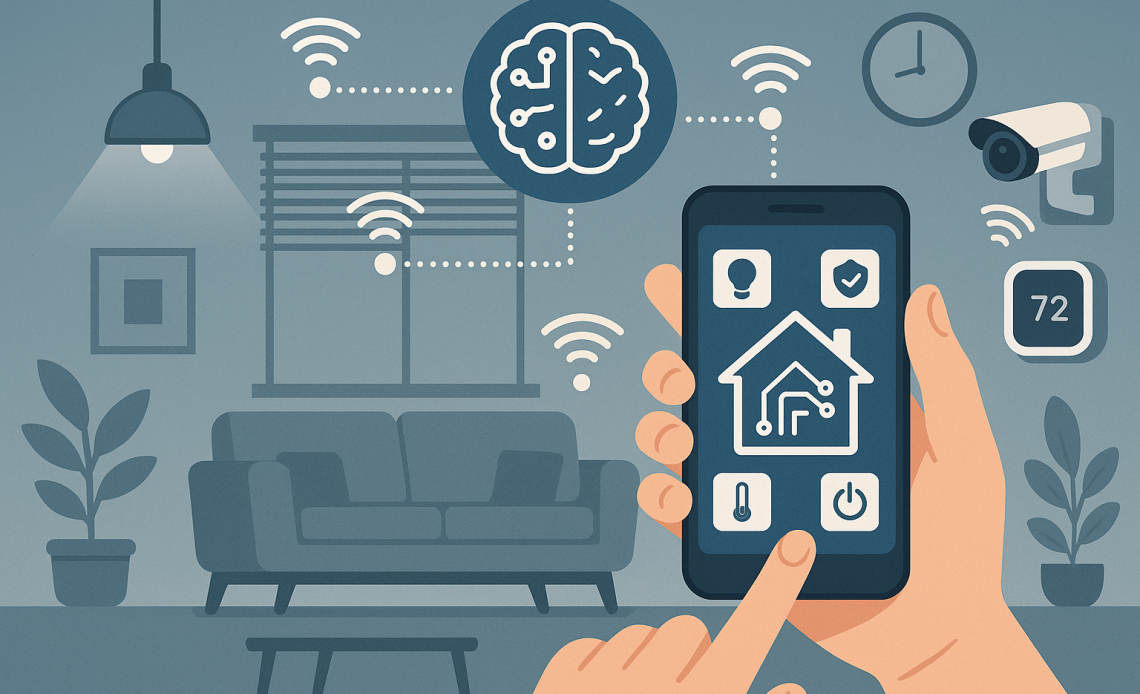
AI is Transforming Smart Homes: From Energy Savings to Security and Personalized Living, Here’s How Technology is Redefining Comfort
Artificial intelligence has become the foundation of modern smart home technology. It is reshaping everyday living by providing more intuitive and efficient ways to enhance our lifestyles. When it comes to optimizing energy consumption, increasing security, or handling mundane tasks, artificial intelligence requires a suitable environment, such as a home. This capability allows a house to learn and adapt to human needs.
Smarter Assistants and Voice Control
Virtual assistants like Amazon Alexa, Google Assistant, and Apple’s Siri represent the very core of most smart homes. AI facilitates natural language processing, allowing users to issue voice commands to assistants from anywhere, and learns user preferences to provide equally personalized responses. When providing reminders, playlists, or calendar updates to other family members in the household, AI assists these devices in voice recognition.
AI is increasingly being used to create meaningful interactions. Previously, many AI agents lacked proficiency in understanding context or accents. However, advanced machine learning models now comprehend more nuanced commands, enabling you to control appliances, smart TVs, lighting, and even your robot vacuum. The voice-control option has evolved from being a superb option to emerging as the steadfast hub for managing the entire home ecosystem.
AI and Energy Efficiency
Energy optimization is one of the most promising fields for AI in smart home technology. While connected devices, through pattern analysis, work to reduce waste and save on bills, patterns can also include heating, cooling, or lighting needs.
- Smart thermostats, such as Google Nest or Ecobee, learn from users’ behavior and local weather conditions to automatically fine-tune temperature settings.
- AI-enabled lighting systems may dim lights based on the time of day, occupancy, or level of natural light available, thereby conserving energy.
- Smart plugs and appliances also feature energy-tracking capabilities that provide proactive insights. Suggestions for the user might include instructions such as using washing machines during off-peak hours or turning off devices that have been idle for an extended period.
When these result in major-scale optimizations, they become useful for homeowners and simultaneously reduce the demand on power grids in terms of sustainability.
Security and Surveillance
AI has given new life to the term’ home security’ by augmenting more intelligent and predictive capabilities. Cameras with AI functionality include facial recognition, anomaly detection, and real-time alerts. Instead of just recording footage, they detected regular activity, such as a family member coming home, versus possible threats.
For instance, some smart cameras can distinguish between an animal walking by, a delivery driver, and a potential intruder. This goes a long way in limiting false alarms. On the side, AI is also used in predictive insights, where, based on patterns, an alert can be sent out to homeowners about strange activities even before the risk is fully realized.
Another field being bolstered by AI is the cybersecurity of a smart home. In modern times, multiple connected devices are placed inside a house. AI-driven monitoring solutions detect unusual activity in the digital sphere or unauthorized logins. Therefore, it safeguards sensitive information from unauthorized access and breaches.
Personalized Living Experiences
One of AI’s compelling roles in smart homes is its ability to foster hyper-personalization. The devices learn with time about one’s routine, preferences, and adaptation to the environment.
- In smart kitchens, based on the ingredients available or individual nutritional habits, AI-run ovens or refrigerators suggest personalized recipes.
- Entertainment systems, equipped with AI, recommend shows, songs, and movies that match the current mood or past viewing behavior.
- Home control settings can be personalized in terms of lights or air quality, the moment a family member or system user enters the room.
They become capable enough to promote comfort and convenience while reducing the mental bandwidth for house management. Gradually, the house does not feel like a bunch of devices, but more like one interconnected partner standing by with expectations.
Health and Wellness Integration
AI is extending its influence into health and wellness within the smart home. Smart speakers and wearables can track sleep patterns and physical activity, as well as monitor coughs and irregular breathing. Based on AI analysis, these systems can inform users of their developing medical conditions.
With AI-based detection of pollutants and allergens, air-purifying and climate-control systems ensure maximum indoor air quality. Some AI-based systems interact with wellness apps to support the environment within the household, aiding in rest, focus, or recovery. With the intersection between AI and health, the smart home ceases to be merely a convenience tool and becomes an impetus for well-being.
Future Potential of AI in Smart Homes
With the evolution of AI, the outlook for smart home technology will shift to predictive and proactive intelligence, rather than reactive automation. In other words, AI systems will grow more adept at figuring out what to do rather than being told; for example, it could consider that the person wakes up at a particular time and may set up a coffee maker to start brewing at 7:37, or maybe give you some healthy meal suggestions or lock up when everyone has left.
As agentic AI models have gained prominence, they have driven a push for more autonomous smart homes. Thus, these systems will likely function to manage devices and coordinate among them to achieve higher-level goals, such as energy sustainability, cost savings, or even enhanced entertainment experiences. Furthermore, with the advancement in AI for emotion recognition, it is possible that such devices could alter the environment based on a resident’s mood.


